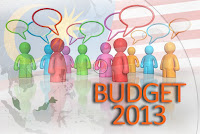A. Rangachari
Tax exemptions on the revenue side, and public sector inefficiencies and subsidies on the expenditure side, need to be addressed.
The current economic situation is grim. Growth rate is much lower and inflation much higher than projections. This downturn is not confined to the current year, but has been shaping up over the past few years. The Budget for 2013-14 is crucial for ushering in sustained economic development in the long run.
A stiff challenge
There is an economic slump, worldwide. The US is going through deflation (negative inflation) and low single-digit economic growth. The peculiarity of our condition is lower growth with higher inflation. This poses a challenge for devising a suitable strategy.
Economic recovery is the joint responsibility of the Government and the Reserve Bank of India. Fiscal and monetary policies should be in congruence.
The RBI has been repeatedly calling for fiscal consolidation over the medium term. This implies a growth-oriented Budget with a sustainable fiscal deficit, involving borrowing by the Government. External rating agencies have not downgraded our sovereign debt rating, but have been warning about the need for fiscal sustainability in the medium term.
Our fiscal track record over the past few years has been poor. The statutory fiscal deficit targets fixed by the FRBM Act, 2003, are yet to be met. The numerous roadmaps are leading nowhere. The RBI has been calling for fiscal consolidation. The coming Budget has to be judged against this background.
It is necessary to recapitulate the fiscal parameters and issues to assess the strategy for fiscal consolidation. These can be broadly classified under expenditure and revenue.
Expenditure issues
The business-as-usual approach of 10 per cent ad hoc cut in non-Plan expenditure and austerity drive on cutting travel is no answer.
It is not correct to assume that all non-Plan expenditure is bad, and all Plan expenditure is essential merely because of the categorisation.
The correct parameter is elimination of all non-productive and non-developmental expenditure, and coming out with specific schemes and projects which are development and growth-oriented.
An earlier Budget Speech of the Finance Minister had referred to thousands of Plan schemes and the need to eliminate overlaps.
Subsidies for fuel, food and fertiliser are a major non-developmental item. Total elimination is not feasible. But mere tinkering and periodic price increases do not touch the basic underlying issues. A few examples are, dismantling the administrative price mechanism for fuel, non-examination of the cost structure for possible reduction, understating the budgetary provision and thereby the budget deficit, and problems involved in targeting intended beneficiaries and the element of diversion.
Food subsidy raises a peculiar problem of inadequate storage in Food Corporation of India and rotting stocks, attracting adverse comments from the Supreme Court.
Another example of expenditure concern is the impact of PSUs (public sector undertakings) on the government budget, in the form of bailouts and budgetary support for investment.
Improving their internal resource generation needs attention.
The Railways pose a serious problem. Recent increases in passenger fares amount to tinkering, without any medium-term strategy. Freight charges continue to subsidise passenger fares, which are indefensible when faced with inflation.
The operating expenses ratio of the Railways is at an all-time high, resulting in lack of internal resources for priority investment with consequent dependence on government budgetary support.
Output and outcome budgeting has to be used to monitor implementation of schemes. The bulk transfer of funds to autonomous bodies, State governments and special arrangements like PPP (Public Private Partnership) needs to be monitored.
Details of remedial action taken as a follow-up will be useful. As part of budget implementation, steps have to be taken to deal with time and cost overruns on projects.
Revenue side
Mobilisation of revenue is a tool for fiscal sustainability. It should be done without impeding growth. Tax exemptions are numerous and substantial, costing more than Rs 4 lakh crore to the Government.
A comprehensive review has to be done to eliminate those which are not relevant. Incentives to stimulate growth need to be identified and their outcome monitored. These may be treated as tax expenditure for better transparency and monitoring.
Tax reform like GST, improvement in tax administration and bringing unaccounted money in the tax net are other issues. Disinvestment is a short cut to reduce budget deficit and not a cure for fiscal ills.
Fiscal consolidation goes beyond the annual budget. The Medium Term Plan for three years under the FRBM Act 2003 is opaque with no clear breakdown of revenue and expenditure projections; nor are the assumptions underlying these clear. Such a plan has to reflect the policies and reforms framed by government to aid growth and tackle inflation. The parameters detailed above will be relevant.
Fiscal deficit control on the parameters set out above would build consumer and investor confidence, and facilitate higher growth with lower inflation. The Government can consider drawing up a Fiscal Responsibility Index with weightage to parameters to rate fiscal consolidation.
This is a pre-election year Budget, running a risk of populism, such as the rural loan waiver scheme in the last elections. We have to be watchful.
(The author IMF Budget Adviser.)


No comments:
Post a Comment